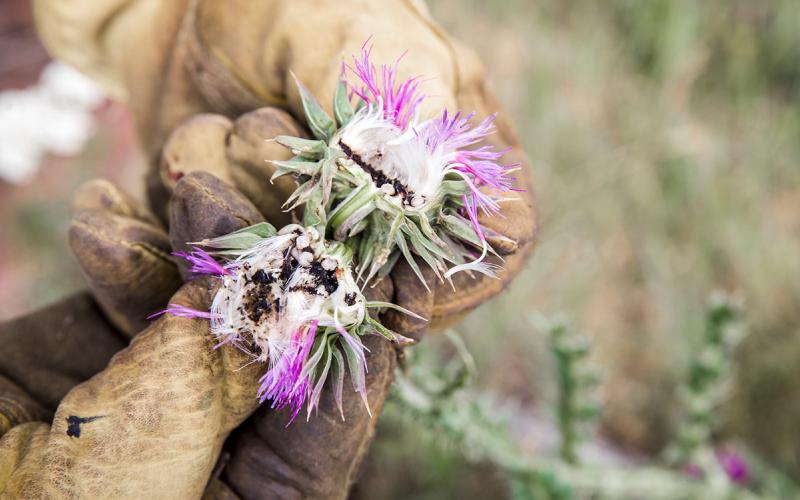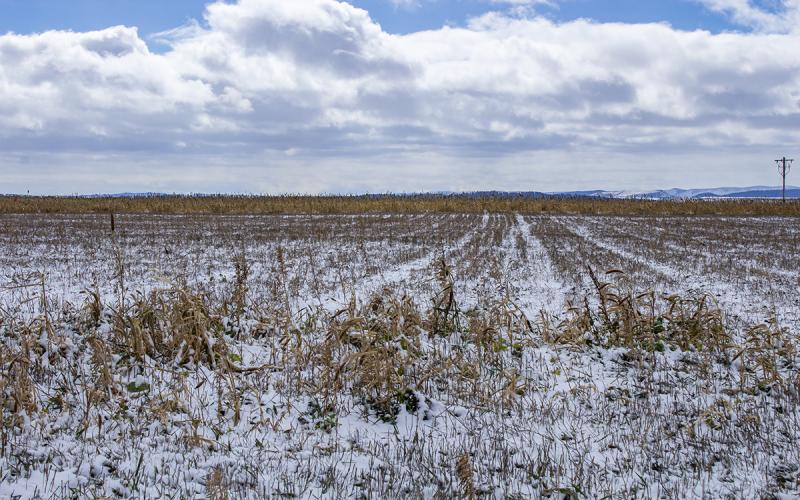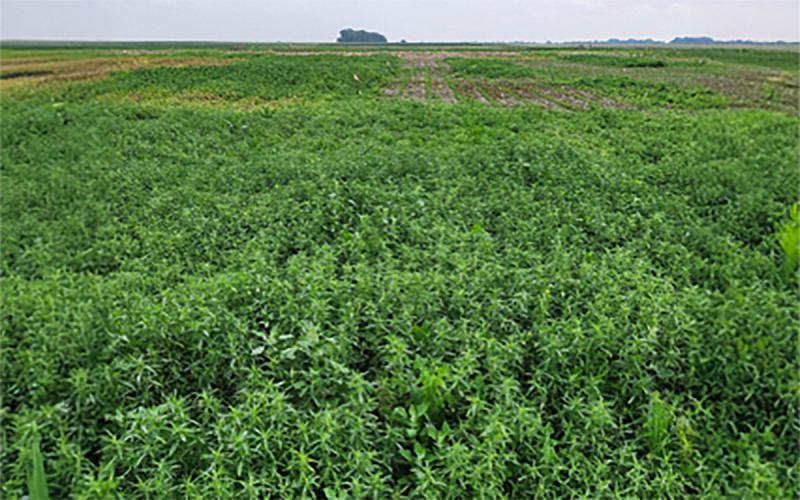
Written collaboratively by Eric Jones, Philip Rozeboom, Jill Alms, and David Vos.
Kochia is a difficult to manage weed that infests crops across South Dakota. Herbicides are the most effective and efficient tactic to manage kochia. However, overreliance on single herbicide active ingredients (such as glyphosate [Roundup] and imazethapyr [Pursuit]) have resulted in resistant populations. Mixing effective herbicides is a tactic that can reduce selection pressure on resistant weeds and increase the effectiveness of weed management.
Dicamba (Engenia, Xtendimax, Tavium) products labeled for tolerant soybean varieties had great utility in managing herbicide-resistant kochia. However, due to the registration being pulled for these products, many South Dakota soybean farmers now have few options for effective postemergence herbicide. Glufosinate (Liberty) and lactofen (Cobra) are effective on kochia when applied timely (2 to 4” weeds). While effective, farmers are highly encouraged to not apply these herbicides alone and recurrently as to not select for resistant weeds.
SDSU Research Trials
Research being conducted at the South Dakota State University Southeast Research Farm is evaluating the effectiveness of glufosinate and lactofen applied alone and mixed on kochia. The research trial was sprayed on May 17, 2025, when kochia plants were 3 to 6” in height and no crop was present. Glufosinate (Liberty) was applied at 32 fl oz/acre with 3 lb of ammonium sulfate per acre. Lactofen (Cobra) was applied at 12 fl oz/acre with crop oil concentrate at 1% volume/volume. The herbicides were applied at the same rate and included the same adjuvants when applied in a mixture. A nontreated control was included for comparison. Each herbicide treatment was replicated four times and % of kochia control compared to the nontreated was evaluated three weeks later (June 6, 2025).
On average, glufosinate applied alone provided 60% kochia control. Whereas the average kochia control was 81% when lactofen was applied alone. When the two herbicides were applied as a mixture, kochia control increased to 94%. Visual representations of the kochia control can be seen in Figures 1 and 2. While the control realized in this research trial is promising, there are a few caveats that need to be addressed.
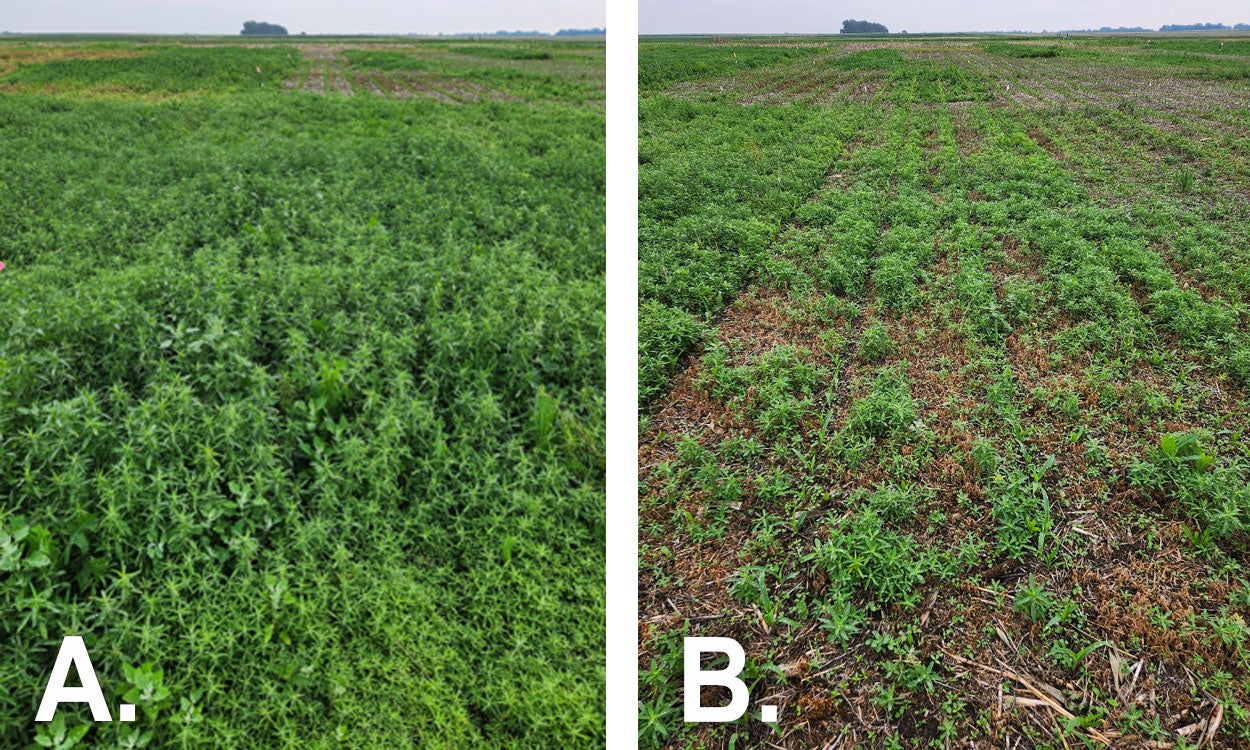
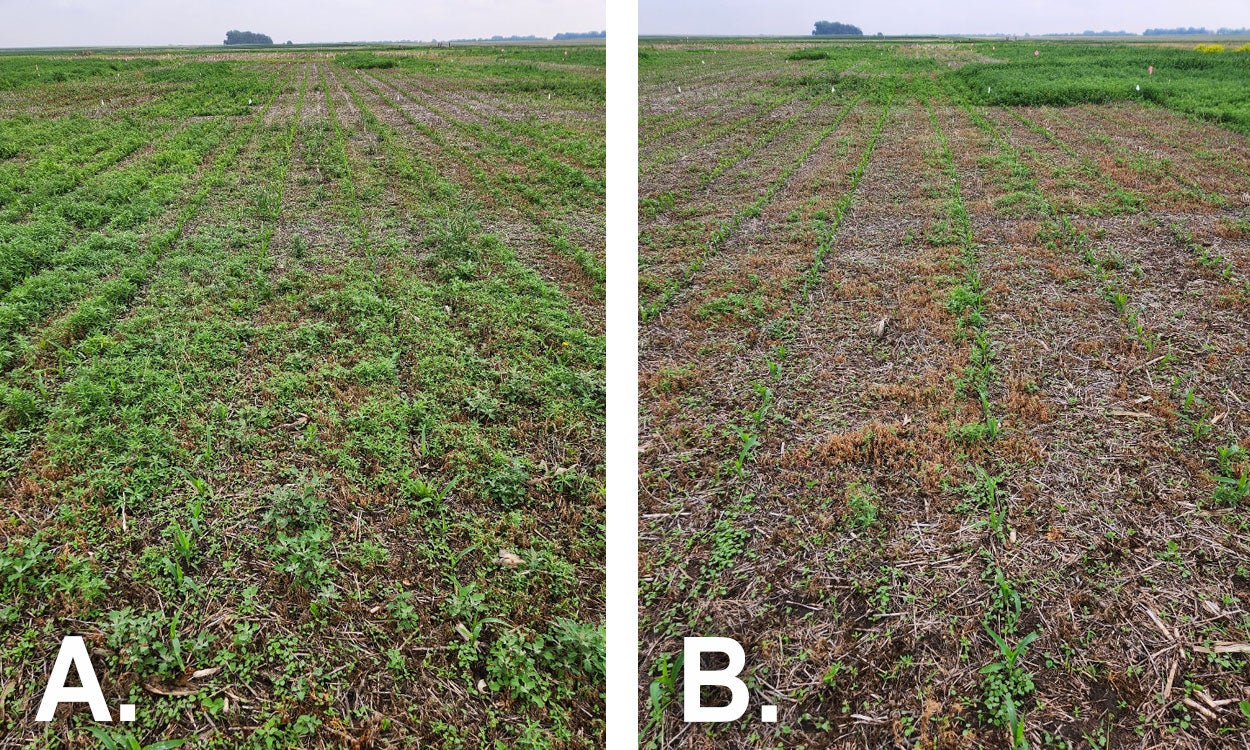
Research Caveats
Weather conditions were not ideal.
The temperature at the time of application was 56° Fahrenheit with a relative humidity of 40%, which is lower than what would be expected for postemergence herbicide application in soybean. Ideally, these herbicides should be applied on hot and humid days for the best performance. The control from glufosinate and lactofen will likely be greater than 80% if applied under ideal conditions on similar sized weeds.
Glufosinate and lactofen applied as a mixture will likely result in short-lived crop injury.
While these two herbicides are labeled to be applied in mixture, there will likely be a crop response (injury in the form of necrotic speckling) (Figures 3 and 4). A similar research trial conducted at the University of Wisconsin demonstrated that injury was observed with this mixture 7 days after treatment, but all injury subsided a week later.
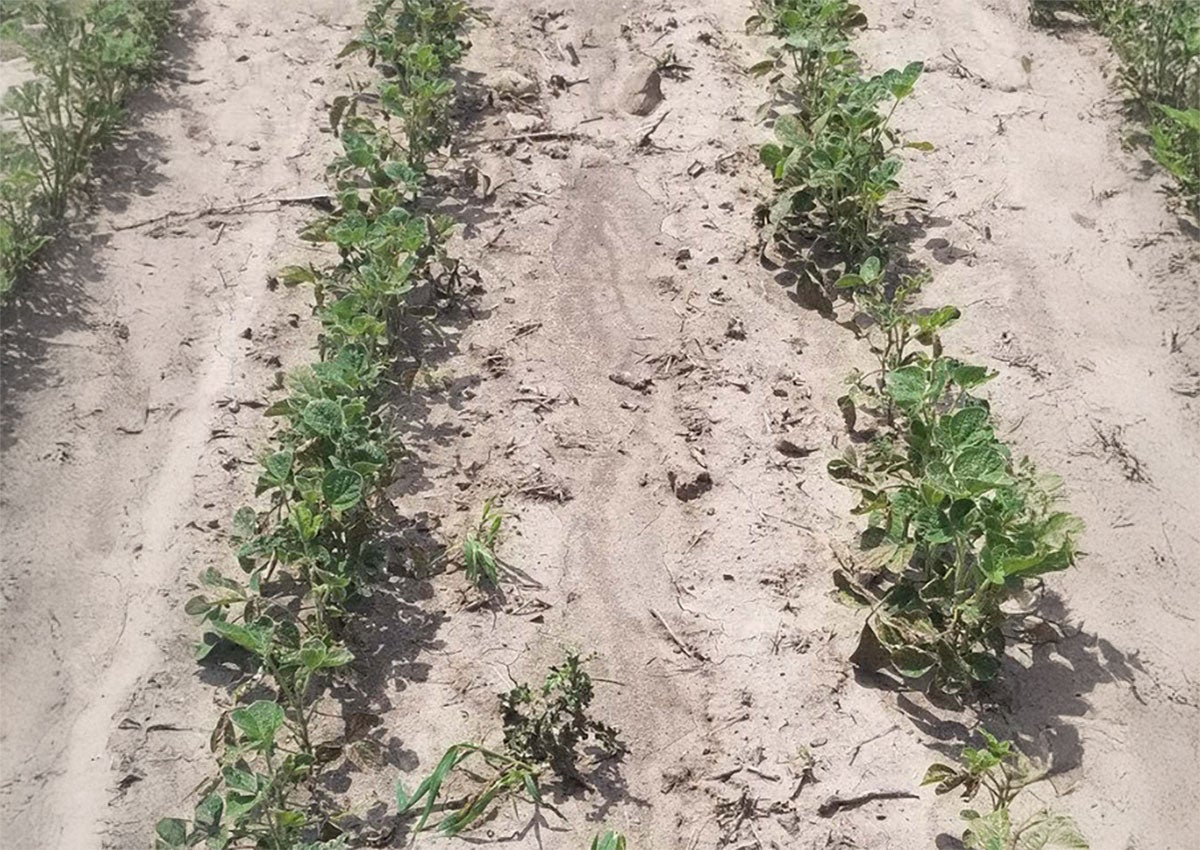
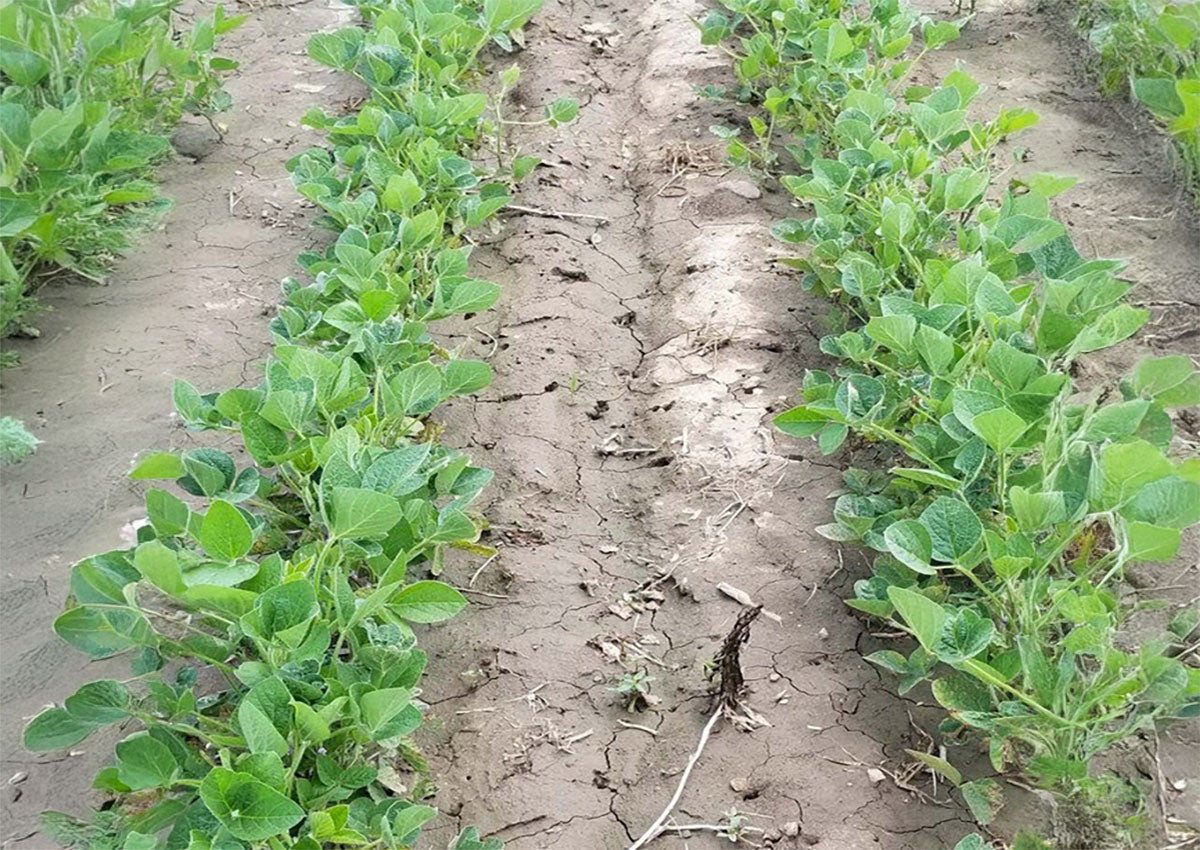
This mixture is not labeled for corn.
While this research trial was conducted without a crop, corn can be seen in Figures 1 and 2. This herbicide mixture is not labeled nor safe on corn. The area was planted to corn one week after application where other corn herbicide trials were to be conducted.
Other herbicides will need to be applied to manage grass weeds.
Glufosinate can effectively manage grass weeds but lactofen has minimal activity on grass weeds. Other herbicides such as glyphosate or a graminicide (such as clethodim [Select] or quizalofop [Assure II]) may need to be applied to manage grass weeds.
In Summary
While this research using this herbicide mixture has demonstrated potential to be effective for kochia management, other tactics can be used to help increase the effectiveness of a management plan. A strong preemergence herbicide program is paramount for any weed management program. Refer to the herbicide labels and the most-recent South Dakota Pest Management Guide - Soybean for use restrictions and other options for chemical management. Mowing or hand weeding isolated patches that are adjacent to the field or were not controlled with a herbicide application are effective tactics to minimize seed production. Other non-chemical tactics include crop rotation and narrow row spacing.
